Green lighting greenlights
The green lighting connotation includes four indicators of high efficiency, energy saving, environmental protection, safety and comfort, which are indispensable. Energy-efficient means that you can get enough lighting by consuming less electric energy, which can significantly reduce the emission of air pollutants from power plants and achieve environmental protection. Safety and comfort mean that the light is clear, soft and does not produce harmful light such as ultraviolet rays and glare, and does not cause light pollution.
2. Visual work visualtask
In the work and activities, the observation process of the details and targets presented in front of the background. Visual work is divided into primary visual work and secondary visual work, depending on the area in which the vision stays.
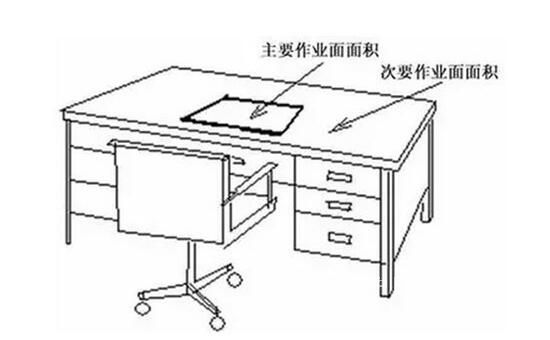
Figure: The main illumination area of ​​the desk lamp is the main visual operation, and the diffused light is the secondary visual operation.
3. Luminous flux luminousflux
Light metric derived from the effect of radiation on a standard luminosity observer. The unit is lumens (lm), 1lm=1cd/1sr. For Ming Vision there are:
In the middle
dΦe(λ)/dλ--the spectral distribution of the radiant flux;
ν(λ)--spectral light (visual) efficiency;
Km - The maximum value of the spectral (visual) performance of radiation in lumens per watt (lm/W). In the case of monochromatic radiation, the Km value under bright visual conditions is 683 lm/W (when λm = 555 nm).
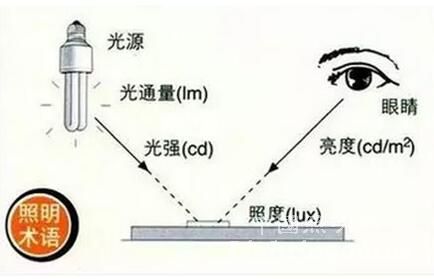
Figure: Schematic diagram of luminous flux principle
4. Luminous intensity luminousintensity
The luminous intensity of the illuminant in a given direction is the quotient obtained by dividing the luminous flux dΦ transmitted in the solid angle element dΩ of the illuminating body by the solid angle element, that is, the luminous flux per unit solid angle. The unit is Candela (cd), lcd = 1 lm / sr.
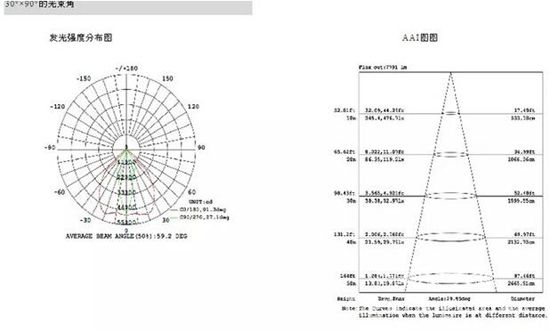
Figure: Schematic diagram of luminous intensity distribution
5. Brightness luminance
The amount defined by the formula L = d2 Φ / (dA · cos θ · d Ω), the unit is candela per square meter (cd / m2).
In the middle
dΦ--the luminous flux (lm) transmitted by a beam element at a given point and containing a solid angle dΩ in a given direction;
dA--including the beam cross-sectional area (m2) at a given point;
Θ—the angle between the normal of the beam section and the beam direction.
6. Illumination illuminance
Light intensity refers to the energy of visible light per unit area, referred to as illuminance, unit lux (Lux or Lx). A physical term used to indicate the intensity of illumination and the amount by which the surface area of ​​an object is illuminated.
The calculation method is the quotient of the luminous flux dΦ incident on the bin including the point divided by the panel area dA, and the unit is lux (lx), 1lx=1lx/m2.
Many students will confuse the illuminance and brightness, how to distinguish it? A picture tells you!
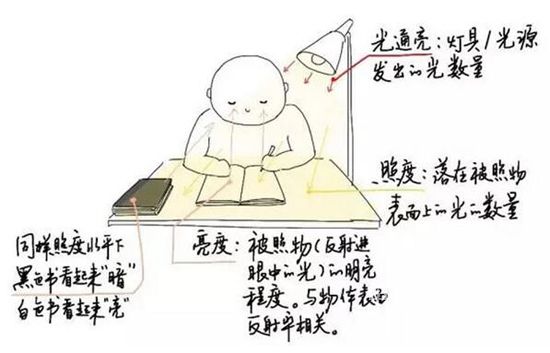
Figure: The way in which brightness and illuminance are generated and distinguished. (LOGO hand-painted)
So, the same space, different basic tone contrast requirements are different
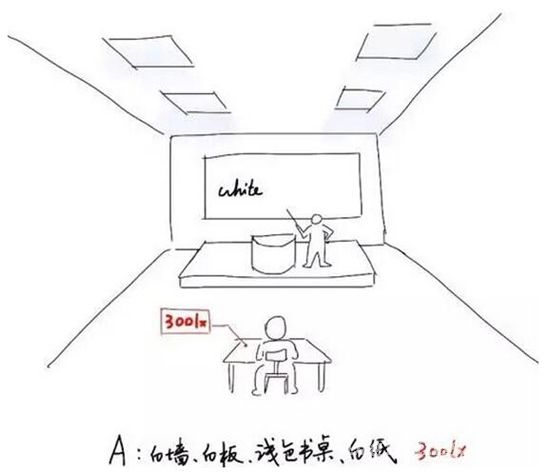
Figure: Requirements for classroom contrast in white base tones. (LEGO hand-painted)
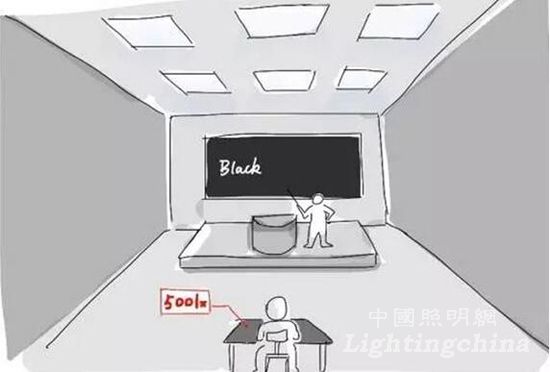
Figure: Requirements for classroom contrast in black base tones. (LEGO hand-painted)
7. Average illumination averageilluminance
Quite simply, the source illuminates the average of the illuminance at each point on the specified surface.
8. Maintain average illuminance maintainedtainageilluminance
The average illuminance on the specified surface shall not be lower than this value. It is the time when the lighting device must be maintained,
The average illuminance on the surface.
9. Reference plane referenceplane
A plane that measures or specifies the illuminance.
10. Working surface workingplane
A plane that works on its surface.
11.Maintenance factor maintenancefactor
The ratio of the average illuminance or average brightness of a illuminating device on a given surface after a certain period of use, compared to the average illuminance or average brightness obtained on the same surface when the device is newly installed under the same conditions.
After the lighting system is used for a long time, the illumination on the working surface is reduced because the light output of the light source itself is reduced, the aging of the lighting material causes the decrease of light transmittance and reflectivity, and the environmental dust pollutes the lamps and indoor surfaces. Causes the light output efficiency of the lamp and the decrease of the indoor surface reflectivity. (PS: Some of the many factors that cause light loss can be restored by cleaning the fixtures and indoor surfaces or replacing the light source. This is called recoverable loss factor, while other factors involve lamps and ballasts. Or loss, unless the lamp is replaced, etc., it is impossible to recover, called the unrecoverable light loss factor.)
12. General lighting generallighting
Also known as "background lighting" or "environmental lighting," is the basis of a lighting plan that refers to non-directional lighting that fills the room, creating a generally adequate lighting base for all activities in a space room.
13. Partition general lighting localizedgenerallighting
An evolutionary version of general illumination, designed to illuminate the general illumination of a particular area, such as the place where it is being worked, with different illuminations.
14. Local lighting locallighting
In order to meet the special needs of certain parts of the room, the lighting mode of the lighting fixtures is set within a certain range.
The luminaire is usually mounted above the work surface. The local illumination method achieves higher illumination with a smaller source power in a localized range, while also making it easier to adjust and change the direction of the light. The local illumination method is often used in the following situations. For example, local illumination is required for higher illumination. If the general illumination does not reach a certain range due to occlusion, it is necessary to reduce the reflection glare in the work area, and to enhance the illumination in a certain direction to enhance the building. Material sense. However, only local illumination is likely to cause visual fatigue on a work surface that is continuously working for a long time.
15. Mixed lighting mixedlighting
Illumination consisting of general illumination and local illumination. Used to create more flexible lighting effects.
16. Focus lighting accentlighting
Also known as "decorative lighting", to increase the illumination of a given area or target, making it more prominent than the surrounding area. It is often used to emphasize specific parts or furnishings of space, such as architectural elements, architecture, kitchens, collectibles, decorations and artwork, museum artifacts, etc.
17. Normal lighting normallighting
Lighting used under normal conditions.
18. Emergency lighting emergencylighting
Illumination enabled due to power failure of normal lighting. Emergency lighting includes evacuation lighting, safety lighting, and standby lighting. The most common in life is the emergency lights and safe evacuation lights that can be seen everywhere in the corridor.
19. Evacuation lighting evacuationlighting
Emergency lighting to ensure that evacuation channels are effectively identified and used.
20. Safety lighting safetylighting
Emergency lighting to ensure the safety of personnel at risk.
21. Standby lighting stand-bylighting
Emergency lighting to ensure that normal activities continue or temporarily continue.
22. stroboscopic effect
Under the illumination of light with a certain frequency, it is observed that the motion of the object exhibits a phenomenon different from its actual motion.
23. Light-emitting diode (LED) lamp lightemittingdiodelamp
A semiconductor device that emits light by an electro-solid light as a lamp of an illumination source.
24. Light intensity distribution distributionofluminousintensity
The curve or table is used to indicate the luminous intensity value of the light source or the luminaire in all directions of the space, also called light distribution.
25. The luminous efficacy of the light source luminousefficacyofalightsource
The luminosity obtained by dividing the luminous flux emitted by the light source by the power of the light source is referred to as the luminous efficacy of the light source. The unit is lumens per watt (lm/W).
26. Luminaire efficiency luminaireefficiency
Under the specified conditions of use, the ratio of the total luminous flux emitted by the luminaire to the total luminous flux emitted by all sources within the luminaire, also known as the luminaire's optical output ratio.
27. Luminaire performance luminaireefficacy
The ratio of the total luminous flux emitted by the luminaire to the power it inputs under the specified conditions of use. The unit is lumens per watt (lm/W).
28. Illumination uniformity uniformityratioofilluminance
Specifies the ratio of the minimum illuminance to the average illuminance on the surface, symbolized U0.
29. Glare glare
A visual phenomenon that causes an uncomfortable feeling or a reduced ability to observe a detail or target due to an unfavorable brightness distribution or a range of brightness in the field of view, or an extreme contrast.
30. Direct glare directglare
The glare produced by the illuminant present in the field of view, especially in the direction of the line of sight.
31. Uncomfortable glare discomfortglare
A glare that produces an uncomfortable feeling, but does not necessarily reduce the visibility of the visual object.
32. Unified glare value unifiedglarerating (UGR)
The International Commission on Illumination (CIE) is a measure of the psychological parameters of the subjective response to discomfort caused by the light emitted by a lighting device in a visual environment.
33. Glare rating (GR)
The International Commission on Illumination (CIE) is used to measure the psychological parameters of stadiums and other outdoor venue lighting devices that are subjectively responsive to human eye discomfort.
34. Reflective glare glarebyreflection
The glare caused by the reflection in the field of view, especially the glare generated by the reflected image near the line of sight.
35. Light curtain reflection conveyingreflection
A specular reflection of a visual object that reduces the contrast of the visual object such that it is difficult to see the detail partially or completely.
36. luminaire shading angle shieldingangleofluminaire
The angle between the plane of the light exit port and the line of sight where the spot is not visible.
37. Color rendering colourrendering
The source exhibits the characteristics of the object's color compared to a reference standard source.
38. Color rendering index colourrenderingindex
A measure of the color rendering of a light source. It is expressed by the degree of coincidence of the color of the object under the measured light source and the color of the object under the reference standard light source.
39. General color rendering index generalcolourrenderingindex
The average of the color rendering index of the 1-8 standard color samples specified by the International Commission on Illumination (CIE). Known as the color rendering index, the symbol is Ra.
40. Special color rendering index specialcolourrenderingindex
The color rendering index of the 9-15th standard color sample selected by the International Commission on Illumination (CIE), symbol Ri.
41. Color temperature colourtmeperature
When the chromaticity of the light source is exactly the same as the chromaticity of the black body at a certain temperature, the absolute temperature of the black body is the color temperature of the light source. Also known as "chroma". The unit is open (K).
42. Correlated color temperature correlatedcolour
When the chromaticity point of the light source is not on the black body trajectory, and the chromaticity of the light source is closest to the chromaticity of the black body at a certain temperature, the absolute temperature of the black body is the correlated color temperature of the light source, referred to as the correlated color temperature. The symbol is Tcp and the unit is on (K).
43. Color tolerance chromaticitytolerances
Deviation of the light source and the nominal color of the light source in a batch of light sources is represented by the color matching standard deviation SDCM.
44. Luminous flux maintenance rate luminousfluxmaintenance
The ratio of the luminous flux of a light source to its initial luminous flux after a given ignition time.
45. reflectance reflectance
The ratio of the reflected radiant flux or luminous flux to the incident radiant flux or luminous flux at a given state of the spectral composition, polarization state, and geometric distribution of the incident radiation.
46. ​​Lighting power density lightingpowerdensity (LPD)
Installation power for general lighting per unit area (including auxiliary power devices such as light sources, ballasts or transformers) in watts per square meter (W/m2).
47. Room shape index roomindex
A value indicating the geometry of a room or place, the value of which is 2 times the room or site area and the difference between the perimeter of the room or site and the difference between the height of the fixture and the height of the face.
48. Annual exposure annuallightingexposure
The value of the cumulative illuminance of the object is measured by the product of the illuminance received by the object and the accumulated hour of the year, in units of annual lux hours (lx·h/a).
49. Color Vector Diagram ColorVector
The TM-30-15 also provides a color vector map while providing dual metrics, providing a more intuitive message to indicate color shifts and saturation changes for various colors.
50. Color purity ColorVector
Color purity is the auxiliary representation when the color is described by the dominant wavelength. In terms of percentage, it is defined as the chromaticity of the object to be tested and the chromaticity of the E light source (ie, the white light source, etc.) The linear distance of the coordinate, which is the percentage of the spectral distance of the E-light source to the spectral trajectory of the main wavelength of the device to be tested (SpectralLocus), the higher the purity, the closer the chromaticity coordinate of the device to be tested is to the spectral color of the dominant wavelength.
Editor: Yingzi
Ultrasonic Annunciator,Ultrasonic Piezo Annunciator,Outdoor Ultrasonic Annunciator,Ultrasonic Piezoelectric Annunciator
NINGBO SANCO ELECTRONICS CO., LTD. , https://www.sancobuzzer.com